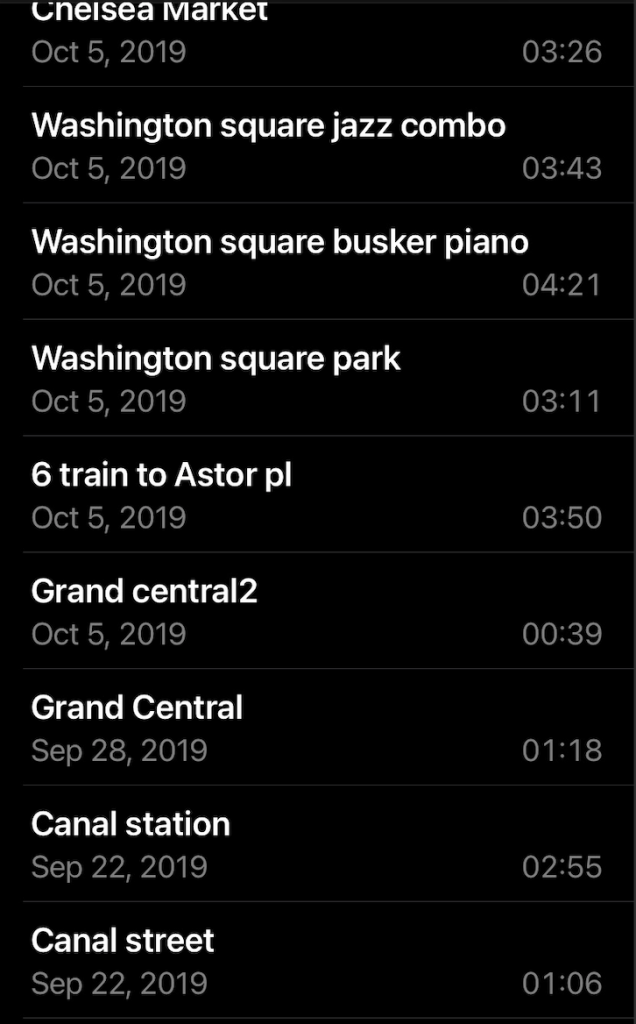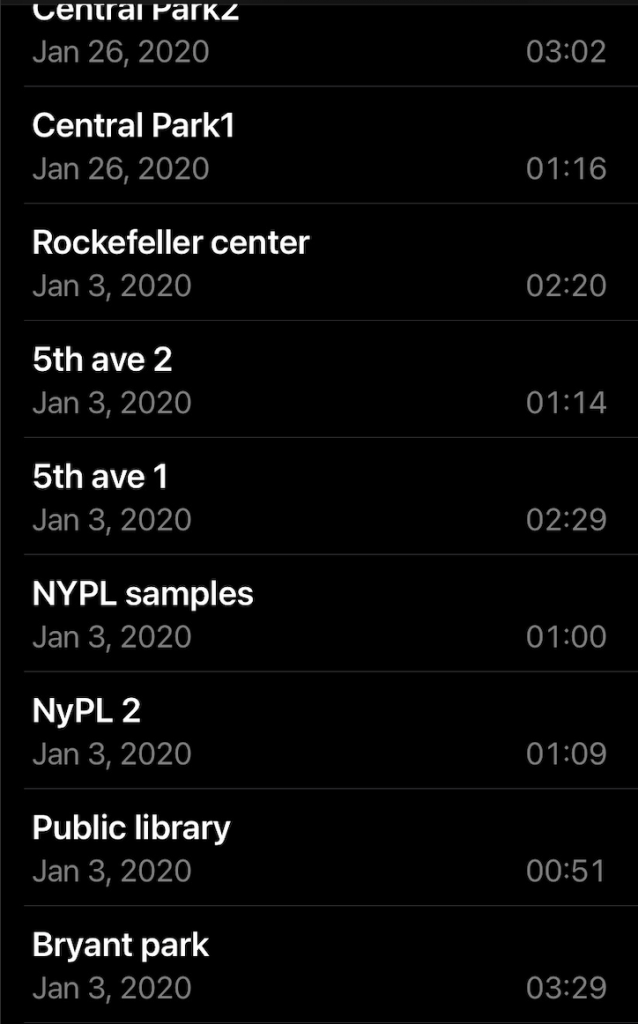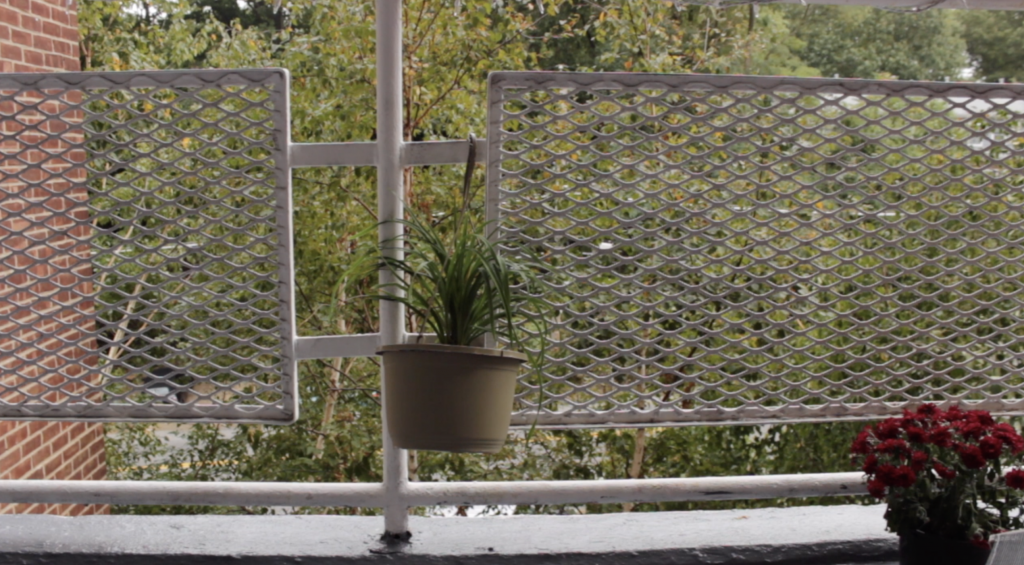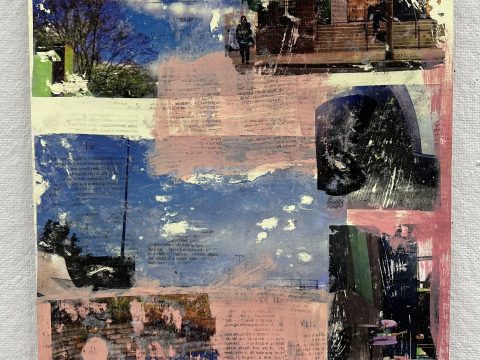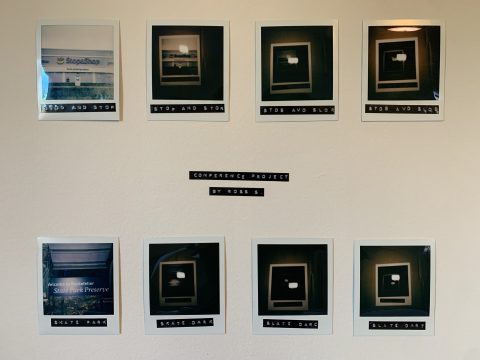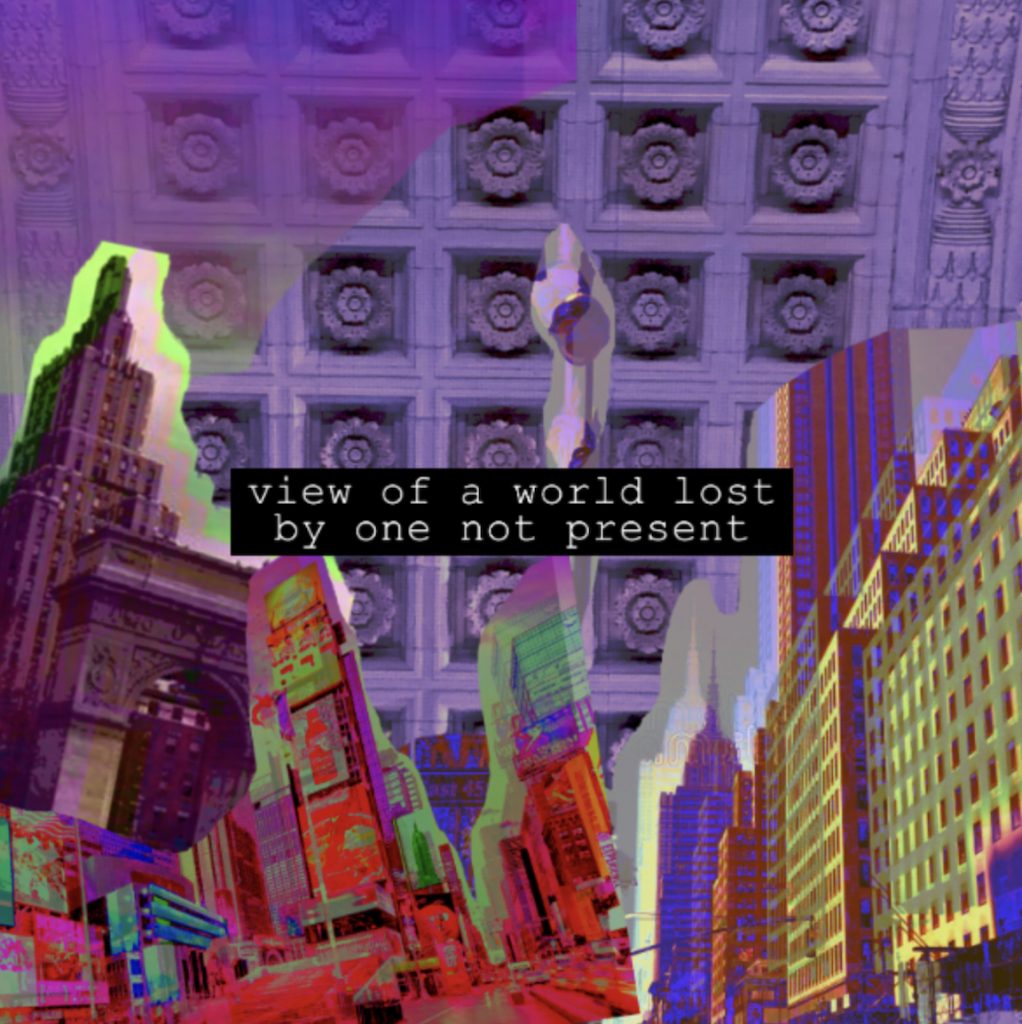
My experience with finding a form helped to evolve and expand upon my thoughts I had before the class. Going into this assignment, initially, I was at a loss for ideas about what to use as evidence and/or a common theme that I would like to work with. My evidence came in the form of a series of recordings I had taken just about one year ago in New York City. Each recording was of one specific location, unaltered by myself or anybody accompanying me. The original goal of these recordings was to document my experiences and the sounds I was hearing living in New York for the first time and turning them into individualized pieces of music for each location. Unfortunately, due to the pandemic and having to return home early, the project came to a halt with only one song completed and released. From that point until just before beginning this assignment, I had not listened to any of the music I had written and the raw sound recordings of these public places. When I finally returned to the recordings, I had trouble listening to the sounds of the crowded places that were so important to me a year ago and felt disconnected from that world.
Form 1: Film
Coming from being a musician and working primarily with sound, I had originally hoped to keep audio a central element of my work. My first form displays this desire to stay within the confines of sound. I created a video of the view from my balcony yet with the audio recorded exactly a year and one day prior while walking down a busy Canal Street. The typed statement at the beginning of the video states “Canal Street, NYC, September 22, 2019 – Observed on balcony, September 23, 2020”. The primary intent of this first piece was to focus on the separation of sound and place while trying to recreate my own experience listening to these soundscapes.
Form 2: Collage
Moving into my second form, I struggled to find a way to more clearly show the sense of isolation I felt while listening to my recordings and displaying a more clear separation between visual images and sound. I ultimately decided to move away from actual audio altogether and focus on visualizing the disorientation I was attempting to display. This idea came about in the prior week’s critique when somebody mentioned “visual noise”. After sitting with the idea for a while, I began experimenting with different ways of portraying “visual noise” in different ways. I started by playing with bright ‘loud’ colors, using fluorescent highlighters to fill in otherwise black and white images of the places which I had recorded. To further the visual distortion and disorientation, each image was glued to a lumpy, uneven, painted canvas in a random pattern, overlapping with other images on the page. This new form helped make the sense of place or location more clear since it no longer had the viewer make connections between visuals and disembodied sound. Despite this aspect becoming more clear, it still lacked the idea of isolationism.
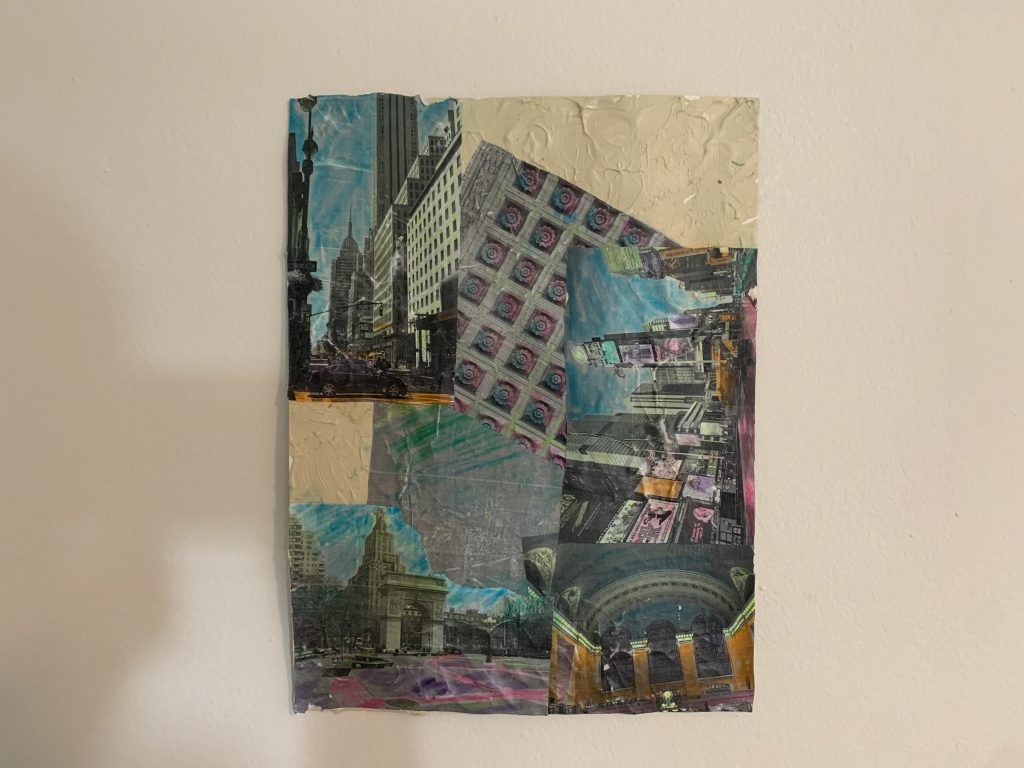
Form 3: Digital Collage
In my third and final form, my primary goal was to make the feeling of ‘isolation’, of which the first two forms lacked, more abundantly clear. I did this by adding a new text element. Since the form of a collage worked well in portraying the sense of “visual noise”, I decided to continue to experiment with the form. I ended up distorting, changing the colors of, and chopping up the images using photoshop. The new digital format allowed me to also try different ways of showing text. Some artists I considered basing this text element off of include, Jenny Holzer and Robert Montgomery. Through this process, I settled on the phrase “view of a world lost by one not present”, written simply in a box right in the center of the image. Adding a text element helped to make the feeling of isolation a much more key part of the piece and helped to better connect it to the idea of place.

After finishing each of these forms, I feel as though I was able to somewhat get my original message across, despite its changes along the way. The progression through the three stages in the process are clear visually, but most of the development of my evidence happened through the ideas and concepts behind each piece. While I had begun with a large emphasis on the listening experience of the audio, I was forced to contemplate what ideas and emotions I was getting from each recording and learn how to express those feelings to other people.
